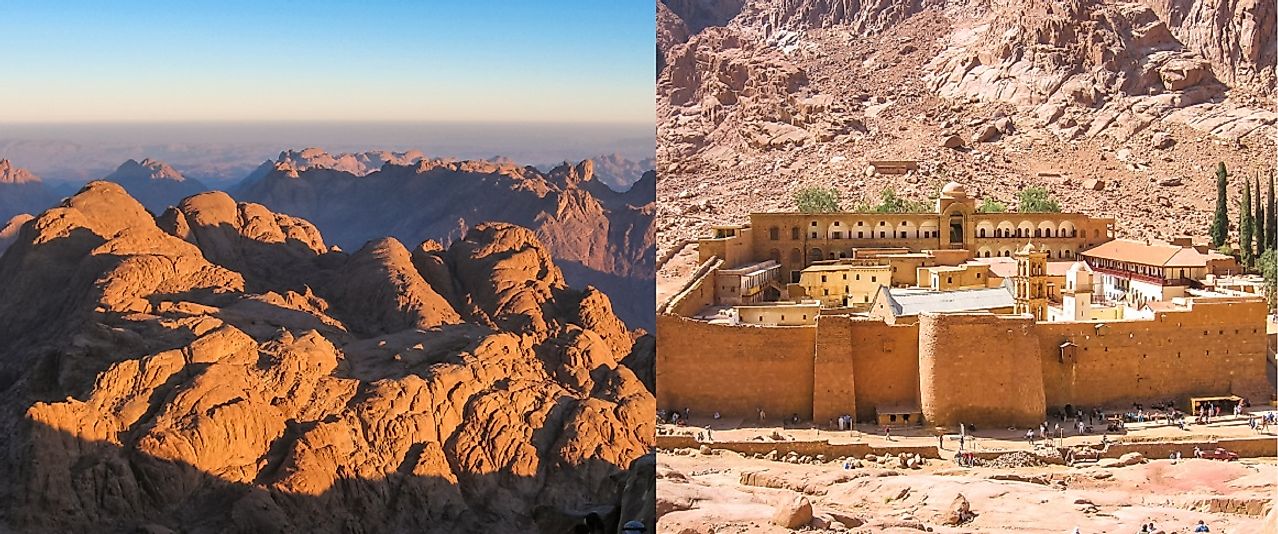Egypt's Top National Parks And Nature Protectorates

Egypt is a country in North Africa that is well known for its Pyramids and ancient civilizations that date back to many centuries ago, alongside other monuments along the River Nile Valley such as the Luxor hieroglyphs. Egyptian museums and landmark like Muhammad Ali Mosque are home to numerous relics. Egypt is a diverse country in terms of habitats, biodiversity and climatic conditions. The biodiversity of the country and the unique geological formations have been preserved for their aesthetic value and to prevent the destruction of these features. For this reason, the Egyptian government has designated a number of protected areas, national parks, and protectorates to ensure that the uniqueness are not affected by urbanization. Though the parks allow human residence within them, the population is subject to the rules and regulations established by the management and administrators of the Parks
Gabal Elba National Park
Galba Elba national park was established in 1986 and is located in the eastern desert of Egypt, covering an area of 1,375 square miles. The park was established to protect the unique ecosystems with their unique biodiversity. The park has a number of habitats including mangroves, the red sea, coral reefs, 22 islands, coastal dunes, wetlands, desert plains and the Gabal Elba coastal mountains. Biodiversity within the park includes acacia, euphorbia, salt marshes, lappet-faced vulture, ostrich and the Nubian wild ass. The park contains a section of the disputed Hala’ib Triangle.
Nabaq Protected Area
Nabaq was established as a protected area in 1992, and it covers an area of 230 square miles. The protected area is located in the south Sinai governorate in the Gulf of Aqaba. The park was established for the sustainable use of the ecosystem to protect and maintain the biological diversity and to meet the community needs at the same time.The marine reserve is administered and managed by the Egyptian Environmental Affairs Agency. The protectorate has a great diversity of flora and fauna including mangroves, sea turtles, sea grass, Dorcas gazelles, Nubian ibex, osprey and spoonbill.
Ras Muhammad National Park
Ras Muhammad National Park was established in 1983 on the Sinai Peninsula between the Gulf of Suez and the Gulf of Aqaba, covering an area of 185 square miles. The park has a very dry climate with moderate winter temperatures and scanty rainfall. The park was established for the protection of coral reefs and fish population as well as terrestrial wildlife. The park protects the area and its biodiversity from effects of human activities and urbanization. The park consists of a large aquatic section and a terrestrial section which cover Tiran and Sanafir islands. Among the plants and animals within the park are mangrove, coral reefs, star fish, mollusks, sea urchins, acacia trees and dum palms.
Saint Katherine Protectorate
The national park covers an area of 247 square miles and occupies the mountainous areas of southern Sinai. The protectorate has a UNESCO World Heritage Site as it contains the St. Catherine monastery and highest mountains in the park. The park has a relatively cool climate owing to the presence of mountains. Tourist attractions in the park include mountain climbing, and the biological diversity including 472 plant species, 27 mammal species, and 46 reptile species. The park is a home to more than 7000 Bedouin citizens. Threats to the protectorate include unsustainable tourist practices, scarce water resources, overgrazing, and mining activities for building materials from the protectorate and over a collection of plants of medicinal value.
Other Protected Areas in Egypt
Other protected areas in Egypt include the Taba Protectorate, Wadi Allaqi Protectorate, Wadi El Rayan Protectorate, and Wadi el-Gemal National Park. Despite these areas hosting diverse terrains and biology, they remain largely unexplored by tourists either due to their inaccessibility or a lack of knowledge regarding their existence.
Egypt's Top National Parks And Nature Protectorates
| Egypt's Notable Nature Protectorates | Area |
| Gabal Elba National Park | 1,375 square miles |
| Nabaq Protectorate | 230 square miles |
| Ras Muhammad National Park | 185 square miles |
| Saint Katherine Protectorate | 247 square miles |
| Taba Protectorate | 1,386 square miles |
| Wadi Allaqi Protectorate | 1,158 square miles |
| Wadi El Rayan Protectorate | 44 square miles |
| Wadi el-Gemal National Park | 2,880 square miles |











